Hoops Rumors is in the process of taking a closer look at each NBA team’s current roster situation, evaluating which clubs still have some moves to make and which ones seem most prepared for training camp to begin.
This series is meant to provide a snapshot of each team’s roster at this time, so these articles won’t be updated in the coming weeks as more signings, trades, and/or cuts are made. You can follow our roster counts page to keep tabs on teams’ open spots as opening night nears.
We’re continuing our pre-camp Roster Snapshot series today with the Southeast Division. Let’s dive in…
Atlanta Hawks
- Players on guaranteed standard contracts: 15
- Players on Exhibit 10 contracts: 1
- Players on two-way contracts: 3
- Unsigned draft picks: 1
There are some non-essential pieces on the Hawks‘ 15-man roster — Zeller was acquired via sign-and-trade as a necessary salary-matching piece in the Dejounte Murray deal, while Atlanta traded for Roddy because Phoenix wanted to get off his salary. Still, waiving either of them (or anyone else) in order to sign a new minimum-salary player doesn’t make sense for the Hawks, since doing so would push their team salary into tax territory.
More Exhibit 10 signees are likely coming in order to help fill out the College Park Skyhawks’ roster, but the biggest question here is what happens with Djurisic, the second-round pick who is coming off a foot surgery that will sideline him well into the fall.
Djurisic had been playing in Serbia, so there has been speculation that he’ll remain overseas as a draft-and-stash prospect. However, Nebojsa Covic – the president of Crvena Zvezda, one team linked to Djurisic – denied that his club has any plans to add him, noting that the 20-year-old is “in America.”
My best guess is that the Hawks plan to have Djurisic start the season with their G League affiliate and will consider promoting him to the 18-man roster (either on a standard or two-way contract) later in the season, once he’s fully recovered.
Charlotte Hornets
- Players on guaranteed standard contracts: 13
- Players on non-guaranteed standard contracts: 1
- Taj Gibson (partial guarantee)
- Players on Exhibit 10 contracts: 4
- Players on two-way contracts: 2
- Players who have reportedly reached contract agreements: 2
- Raequan Battle (Exhibit 10), Harry Giles (Exhibit 10?)
It seems safe to assume Gibson will make the Hornets‘ opening night roster, but that still leaves an open spot on the projected 15-man standard roster. Charlotte doesn’t need to fill that spot, but the club’s salary is so far below the luxury tax line that it would make sense to add a 15th man on a non-guaranteed deal.
There are plenty of free agents still available who would be fits in Charlotte. Some of the team’s camp invitees could be in the mix for that spot too, though they may also be battling for the final two-way slot alongside Diabate and Simpson.
Of the current Exhibit 10 players on the roster and those who have been reported, only Giles has too many years of NBA service to qualify for a two-way deal, so he’s a possible candidate for the standard roster.
Miami Heat
- Players on guaranteed standard contracts: 14
- Players on Exhibit 10 contracts: 2
- Players on two-way contracts: 3
- Players who have reportedly reached contract agreements: 1
Reports throughout the offseason have indicated that the Heat aren’t interested in carrying a full 15-man roster into the regular season since doing so would push their team salary above the second tax apron. So it came as a bit of a surprise on Monday when word broke that the team had agreed to a deal with Little.
Moving slightly above the second apron isn’t that big a deal though — based on reports out of Miami, it sounds like Little’s contract will be either non-guaranteed or partially guaranteed, allowing them to waive him in a month or two (or even earlier) and duck back below the second apron if they so choose.
Plus, while teams above the second apron aren’t permitted to aggregate salaries in a trade, the Heat would still be able to do so if they’re below the second apron upon completion of the deal. So if they were operating above the second apron by $1MM and made a trade in which they aggregated three contracts in order to take back two while shedding $3MM in salary, that’d be permitted.
While the 15th spot is the bigger story to watch here, it’s also worth keeping an eye on the two-way slots. The Heat already made one change to those spots this offseason when they waived Pullin in order to sign Christopher. Stevens and Pullin (who is back on an Exhibit 10 contract) could make cases to be converted to two-way deals with strong performances in camp and the preseason.
Orlando Magic
- Players on guaranteed standard contracts: 15
- Players on Exhibit 10 contracts: 5
- Players on two-way contracts: 1
- Players who have reportedly reached contract agreements: 1
- Robert Baker (Exhibit 10)
The Magic‘s 15 players on standard contracts look set, but with only one two-way slot filled so far, they could put the other two spots up for grabs in a camp competition.
McClung is reportedly viewed as a good candidate to claim one of those two-way deals. Of the current camp invitees, only Culver – who has four years of NBA service – is ineligible to be converted to a two-way contract.
Washington Wizards
- Players on guaranteed standard contracts: 15
- Players on non-guaranteed standard contracts: 1
- Players on two-way contracts: 2
- Players who have reportedly reached contract agreements: 3
- Leaky Black (Exhibit 10), Kira Lewis (Exhibit 10), Jaylen Nowell (Exhibit 10)
Butler appeared in 40 games for the Wizards last season, but the only way he’ll be part of this year’s opening night roster is if the team trades or waives a player on a guaranteed contract. That’s not out of the question — Baldwin is probably the player whose roster spot would be most in jeopardy, since the former first-round pick has yet to establish himself as a reliable rotation player and didn’t look great in Summer League.
Interestingly, Lewis and Nowell agreed to Exhibit 10 deals with Washington despite being ineligible for two-way deals, so they’ve either resigned themselves to joining the Capital City Go-Go or were promised a shot to compete for a standard roster spot.
Black could be in the mix for the open two-way slot here. Butler would also be two-way eligible, but he’d have to be waived and re-signed. The Wizards could also look outside the organization to fill that spot, perhaps targeting a player from another roster who’s cut during or after the preseason.
Previously:
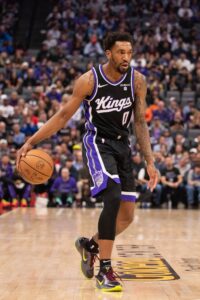
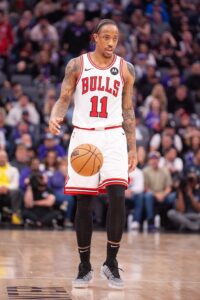 Speaking of Duarte, he was a throw-in salary-matching piece in the Kings’ biggest move of July, a sign-and-trade deal for six-time All-Star
Speaking of Duarte, he was a throw-in salary-matching piece in the Kings’ biggest move of July, a sign-and-trade deal for six-time All-Star 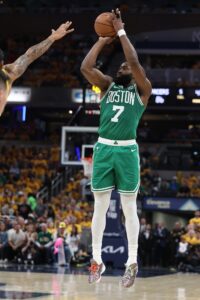 Boston Celtics (58.5 wins):
Boston Celtics (58.5 wins): 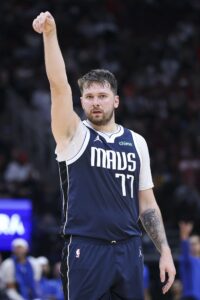 Dallas Mavericks (49.5 wins): 78.0%
Dallas Mavericks (49.5 wins): 78.0%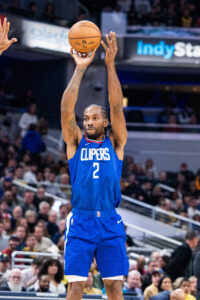 Los Angeles Clippers (39.5 wins):
Los Angeles Clippers (39.5 wins): 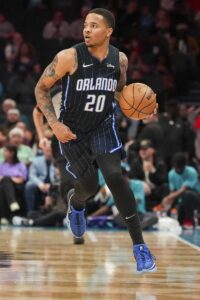 Sure, there were still holes in his game. He rarely attempted long-range shots, converting just 31.0% of his 1.5 three-point attempts per game — and that represented the most accurate mark of his career. While he had a good deal of success on mid-range looks, having a guard who can’t space the floor isn’t ideal for a team’s offense.
Sure, there were still holes in his game. He rarely attempted long-range shots, converting just 31.0% of his 1.5 three-point attempts per game — and that represented the most accurate mark of his career. While he had a good deal of success on mid-range looks, having a guard who can’t space the floor isn’t ideal for a team’s offense.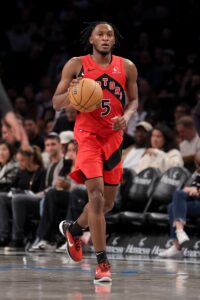
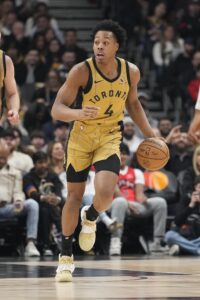 Barnes’ five-year, maximum-salary rookie scale extension is essentially the same deal that his fellow 2021 lottery picks
Barnes’ five-year, maximum-salary rookie scale extension is essentially the same deal that his fellow 2021 lottery picks